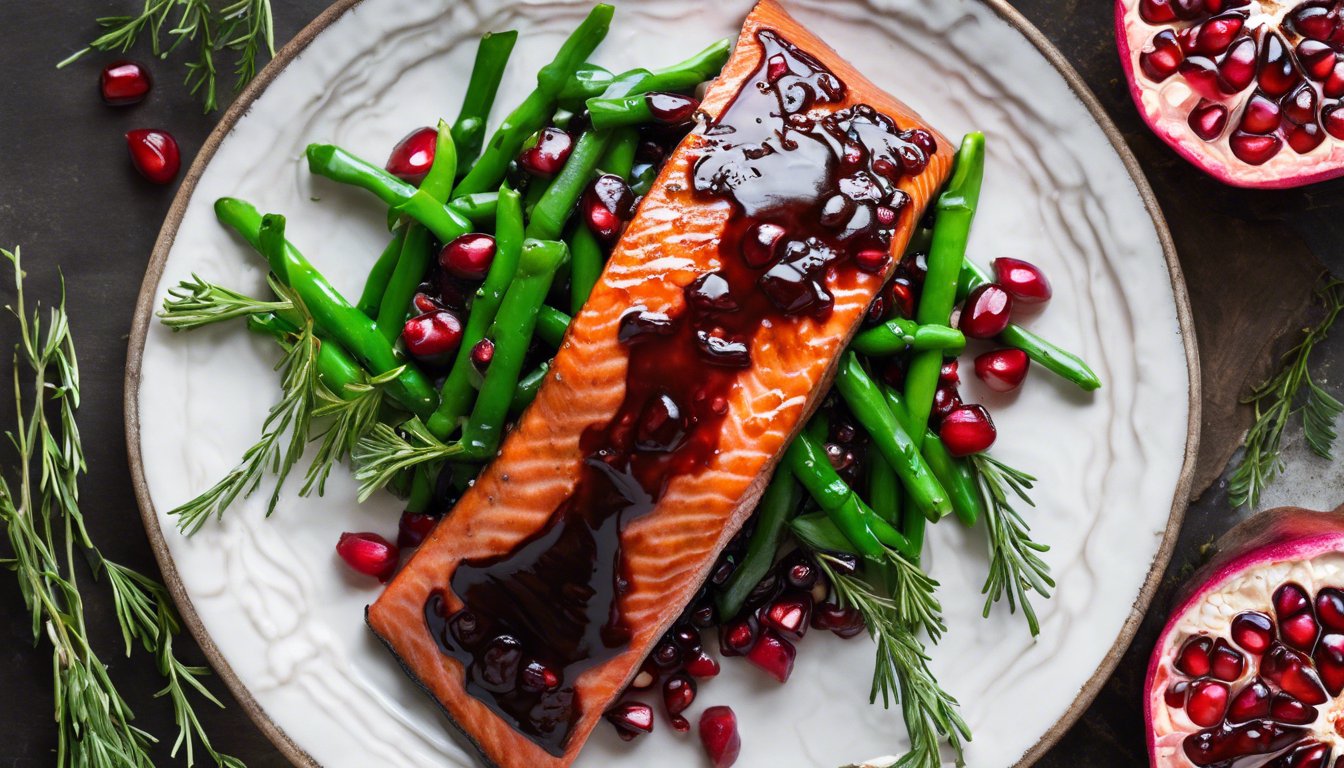
The Benefits of Pomegranate Molasses in Cooking
Pomegranate molasses is a thick, syrupy reduction made from pomegranate juice, sugar, and lemon juice. Its unique combination of sweet and tart flavors makes it an incredibly versatile ingredient in the culinary world. One of the primary benefits of using pomegranate molasses in cooking is its ability to add depth and complexity to a wide range of dishes. Its rich, concentrated flavor enhances marinades, glazes, dressings, and sauces, imparting a distinctive tang that can elevate the taste profile of your recipes.
Moreover, pomegranate molasses is not just about flavor; it also offers health benefits. Pomegranates are known for their high antioxidant content, which can help in reducing inflammation and protecting against various diseases. When used in cooking, the molasses can contribute to the nutritional value of your dish, adding a touch of wellness to your culinary creations.
Another advantage of pomegranate molasses is its shelf life. Unlike fresh pomegranates that are seasonal, pomegranate molasses can be stored in a cool, dark place for a long time, allowing you to enjoy its unique flavor throughout the year. Its thick consistency also makes it an excellent glaze for meats and vegetables, creating a caramelized, glossy finish that is both visually appealing and delicious.
Lastly, pomegranate molasses is a great way to add a Middle Eastern or Mediterranean twist to your dishes. It is a staple ingredient in many traditional recipes from these regions and can inspire you to explore new cuisines and cooking techniques. Whether you’re drizzling it over roasted vegetables, stirring it into a stew, or using it as a base for a cocktail, pomegranate molasses is sure to become a cherished ingredient in your kitchen.
Preparing the Perfect Glaze for Salmon
Creating the perfect glaze for salmon involves a balance of flavors and the right consistency to ensure it adheres well to the fish while cooking. Pomegranate molasses, with its rich and tangy profile, serves as an excellent base for a salmon glaze. To prepare this glaze, you’ll need the following ingredients:
- 1/4 cup pomegranate molasses
- 2 tablespoons honey
- 1 tablespoon soy sauce
- 1 clove garlic, minced
- 1 teaspoon fresh ginger, grated
- 1/2 teaspoon ground black pepper
- 1/4 teaspoon crushed red pepper flakes (optional for heat)
To begin, combine the pomegranate molasses, honey, and soy sauce in a small saucepan over medium heat. Stir the mixture until the honey is fully dissolved. Add the minced garlic and grated ginger to the saucepan, which will infuse the glaze with aromatic flavors. Season with ground black pepper, and if you enjoy a bit of spice, add the crushed red pepper flakes.
Allow the mixture to simmer gently, stirring occasionally, until it thickens slightly. This should take about 5 to 7 minutes. The consistency should be syrupy enough to coat the back of a spoon but still pourable. Be careful not to over-reduce the glaze, as it will thicken further upon cooling and can become too sticky if overcooked.
Once the glaze has reached the desired consistency, remove it from the heat and let it cool for a few minutes. It’s important to let the glaze cool slightly before applying it to the salmon to prevent it from cooking the surface of the fish prematurely. Additionally, a slightly cooled glaze will adhere better, creating a more even coating.
Before glazing the salmon, ensure that the fish is properly prepared. The salmon should be patted dry with paper towels to remove excess moisture, which helps the glaze stick and promotes better caramelization during cooking. Brush the glaze generously over the top and sides of the salmon fillets, reserving some for basting during the cooking process.
As a tip, if you’re grilling or broiling the salmon, apply the glaze towards the end of the cooking time to prevent it from burning due to the sugars in the pomegranate molasses and honey. A final brush of glaze just before serving will give the salmon a beautiful sheen and an extra burst of flavor.
With these steps, you’ll have a perfectly balanced pomegranate molasses glaze that will complement the rich, oily nature of salmon, creating a dish that is as nutritious as it is delicious.
Step-by-Step Guide to Making Pomegranate Molasses Glazed Salmon
Embarking on the culinary journey to create Pomegranate Molasses Glazed Salmon, begin by gathering the following ingredients:
- 4 salmon fillets, skin on (about 6 ounces each)
- 1 tablespoon olive oil
- Salt and freshly ground black pepper, to taste
- Prepared pomegranate molasses glaze (from the previous section)
With your ingredients at the ready, follow this step-by-step guide to achieve a succulent and flavorful dish:
First, preheat your oven to 400 degrees Fahrenheit (200 degrees Celsius) if you choose to bake the salmon. Alternatively, if you prefer to grill, get your grill preheated to a medium-high setting.
While the oven or grill is heating, take the salmon fillets and season them with salt and freshly ground black pepper. Remember, the glaze will also add flavor, so season lightly to avoid overpowering the dish.
Next, heat a tablespoon of olive oil in an ovenproof skillet or grill pan over medium-high heat. Once the oil is shimmering, place the salmon fillets skin-side down in the pan. Cook for about 3 minutes until the skin is crispy. If you’re grilling, place the salmon skin-side down directly on the grill.
After the skin has crisped, brush a generous amount of the pomegranate molasses glaze over the top of each fillet. If you’re baking the salmon, transfer the skillet to the preheated oven and bake for 5-7 minutes, depending on the thickness of the fillets. For grilling, close the grill lid and continue to cook for another 5-7 minutes.
Halfway through the cooking process, baste the salmon with additional glaze to build up a rich flavor. Be cautious not to overcook the salmon; it should be just cooked through and still moist inside.
Once the salmon is cooked to your liking, remove it from the oven or grill and let it rest for a couple of minutes. This resting period allows the juices to redistribute, ensuring each bite is as flavorful as the last.
Finally, serve the Pomegranate Molasses Glazed Salmon with a side of your choice. A fresh salad, steamed vegetables, or a bed of fluffy rice can complement the rich flavors of the glaze. Drizzle any remaining glaze over the salmon right before serving for an extra touch of sweetness and tang.
As a cooking tip, always keep a close eye on the salmon as the sugars in the glaze can cause it to burn quickly. Adjust the cooking temperature or move the salmon to a cooler part of the grill if necessary. The goal is to achieve a balance between a beautifully caramelized exterior and a tender, flaky interior.
With these steps, you’re well on your way to mastering the art of Pomegranate Molasses Glazed Salmon, a dish that promises to delight the palate with its harmonious blend of flavors.
